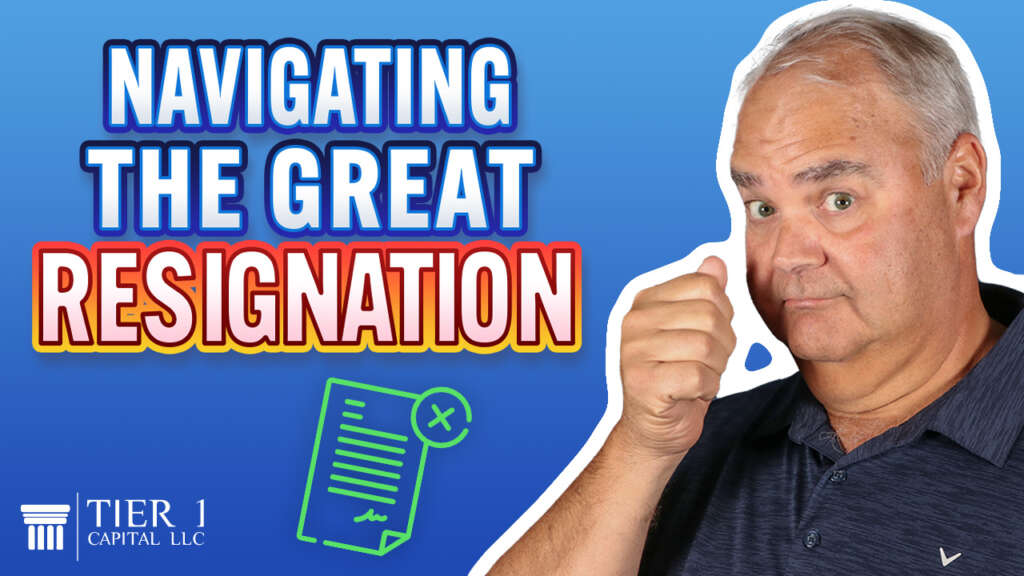
Americans are quitting their jobs in record numbers, it’s called the Great Resignation. Over the past two and a half years, over 47 million people have voluntarily left the workforce. If you’re a business owner, this could be bad news.
On average, it could cost up to 200% of that employee’s salary to replace them with a new employee. Seeing these statistics can be troubling for a business owner. However, there are some ways to help you take advantage of the great resignation so you could be in a position of control and not a position of victimization.
According to the Society for Human Resource Management, a loss of a key employee can have particularly damaging effects for small businesses. And here’s why.
The first reason is because that key employee may be the only person in your entire area who has the skill set to perform that job. Not only that, but a lot of times in a small business, they’re the only person who has that particular skill set and knowledge. Meaning the business owner may have trained them, but that key employee may have gone on and learned other things by themselves to help progress. They take things to the next level and that’s why it’s so important to retain them.
The second point is that the loss of a key employee also damages the culture and morale of the remaining employees. For example, if Bob was a really good performer and really moving the company along and Sally sees that, she may think the business isn’t going to continue to grow and prosper because Bob had so much to do with the success of the entire business.
The third reason is because there’s a smaller pool of internal employees who can perform the tasks and the duties of the lost key person.
The fourth reason is because a small business might have less resources, cash, cashflow and contacts that can be used to replace the lost key employee.
Let’s face it, employee departures cost companies time, money and other resources that many small businesses simply don’t have. With talent scarcity on the horizon, it’s going to be harder than ever for small businesses to retain that key talent within their business.
So that’s why it’s important to plan for the future, to protect those key employees and to reward them for their hard work and what they bring to your business. But there must be a delicate balance between taking care of your key employee and not giving away equity in your business.
So what are the possible solutions?
Well, one may be setting up a special retirement plan for that key employee to make sure that they’re taken care of in the future, something comparable that they might get from a larger company. But within your company’s budget. But again, let’s face it, there’s only so much cash flow to go around. How can you take care of the business, take care of your key employee, and also take care of your cash flow?
That’s where we come in. We’ve developed a process that looks at cash flow and makes it as efficient as possible. You have the same amount of cash coming in every single month. However, it’s not how much money you make, it’s how much money you keep that really matters. It’s not the products you buy with the money. It’s how you make those purchases.
How can you make your cash flow more efficient so you’re able to get $1 to perform multiple jobs? The dollar to protect the business owner, to build the company and also to retain this key employee. Getting $1 to do multiple jobs increases your efficiency. It increases your availability or accessibility to cash and also puts you in a position to weather any storms going forward.
We specialize in helping small businesses find the money to reward their key employees without sacrificing the business owners or the business’s livelihood.
You see, the money is literally hiding in plain sight. We show you how to unlock that cash flow or that cash and put you in control of it instead of a bank, an investment firm or the government.
If you’d like to learn more about this process, check out our website at Tier1Capital.com
And remember, it’s not how much money you make. It’s how much money you keep that really matters.



